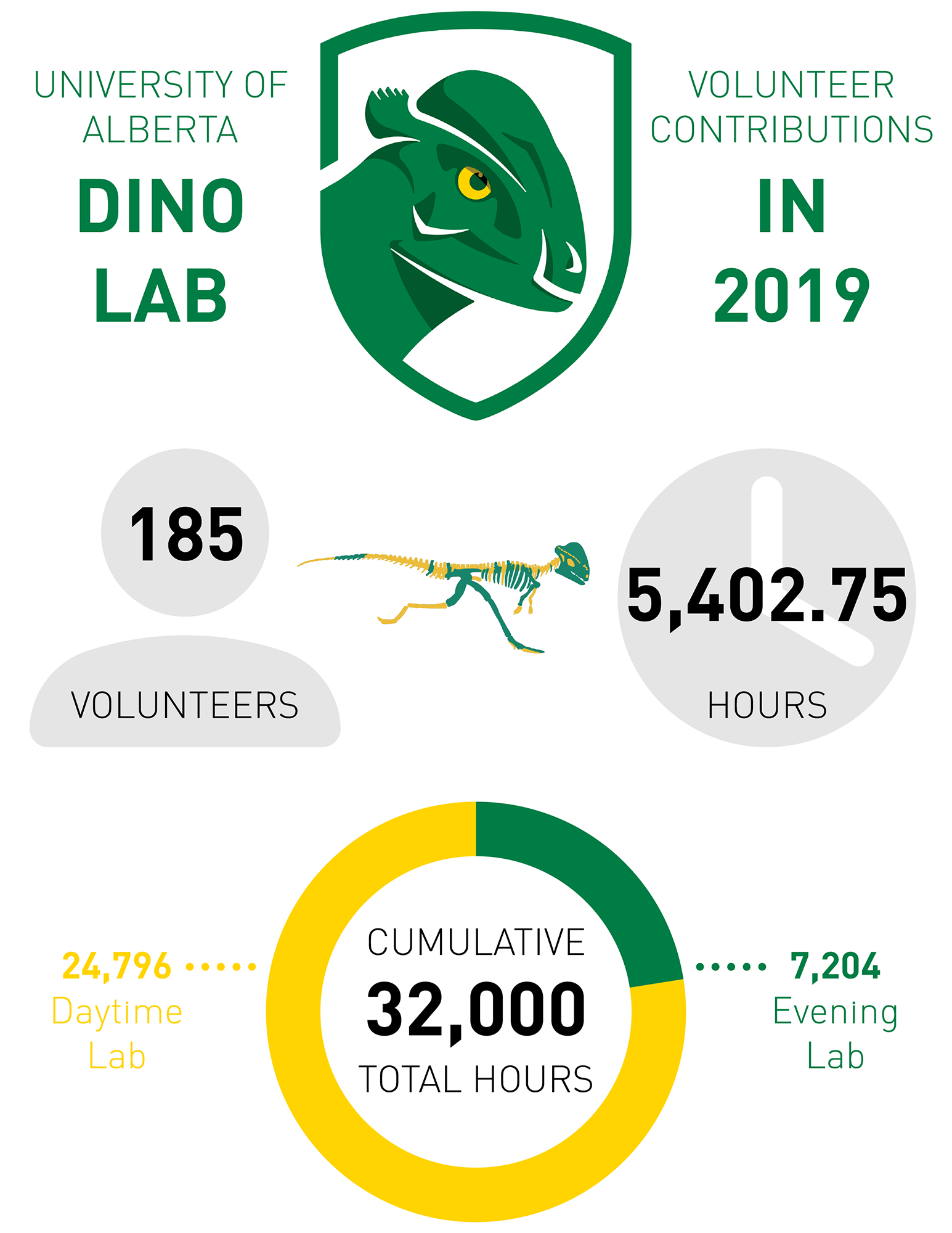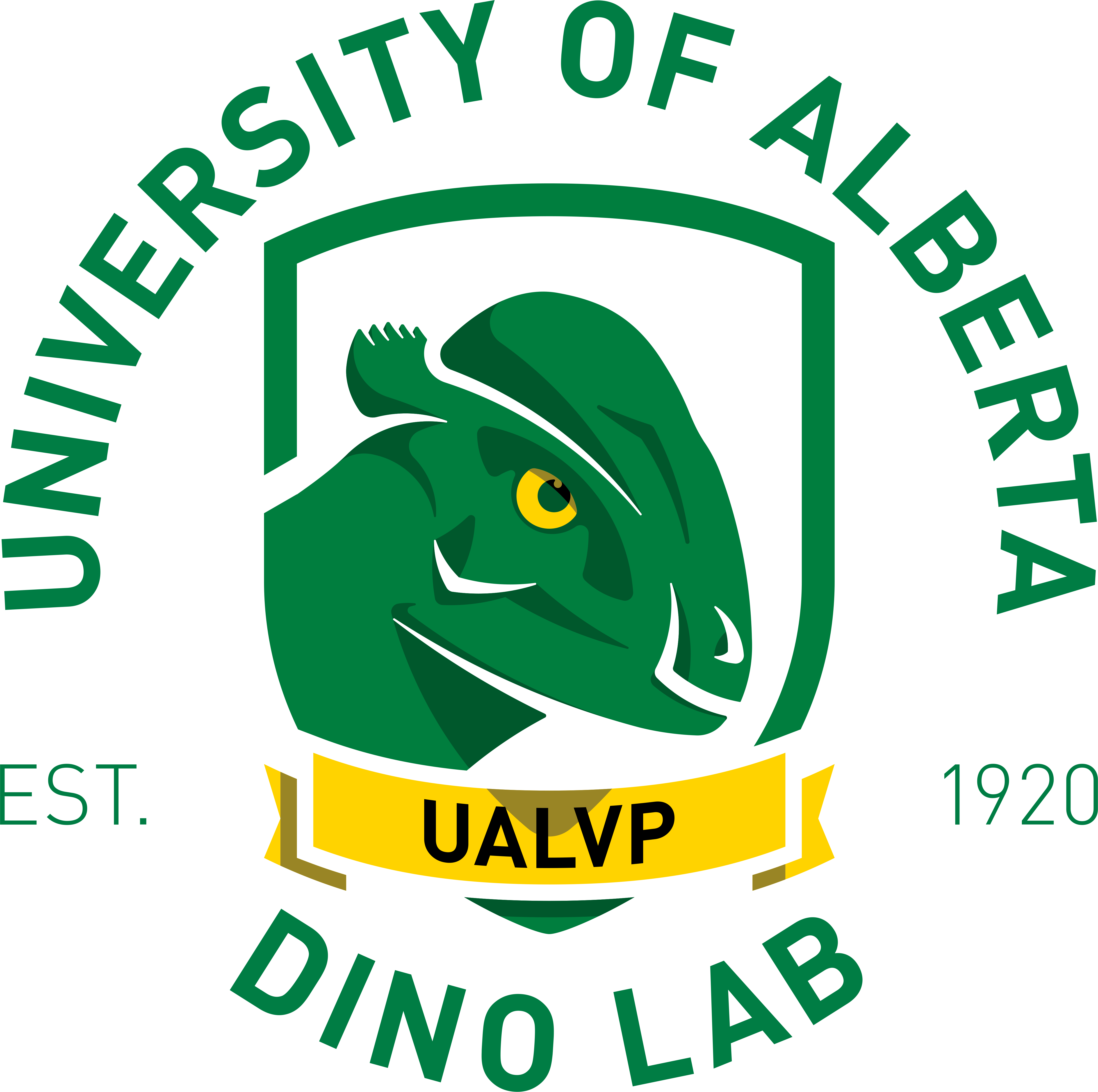Welcome to the Dino Lab at the University of Alberta! Here you will find information on our personnel, our volunteering and education/outreach programs, and much more.
What is palæontology?
Palæontology is the scientific discipline that deals with the fossil remains of once-living organisms. To be considered a fossil, a specimen must be extensively altered by geological processes, which often takes at least one hundred thousand years. The general public typically considers palæontology to be the study of dinosaurs, but this is somewhat limiting in that dinosaurs are only one of the many groups of extinct organisms that have lived during the 4.5 billion year history of life on Earth. In general, palæontology is divided into three main areas: vertebrate palæontology, invertebrate palæontology, and palæobotany.
Vertebrate palæontology is the study of all animals that have vertebrae (i.e., a backbone) including fish, lizards, snakes, birds, amphibians, dinosaurs, mammals, marine reptiles (ichthyosaurs, plesiosaurs, etc.), and flying reptiles (pterosaurs). These types of fossils comprise the specimens in Dino Lab and University of Alberta Laboratory for Vertebrate Palæontology (UALVP) collections.
Invertebrate palæontology is the study of animals that do not have vertebrae, including trilobites, snails, clams and oysters, insects, crustaceans, and mollusks. At the University of Alberta, this area falls within the purview of Earth and Atmospheric Sciences rather than Biological Sciences, and further information can be accessed here.
Palæobotany is the study of fossil plants. Related to palæobotany are palynology (the study of spores and pollen) and other organic matter. Further information about palæobotany at the University of Alberta can be accessed here.
Here is a time lapse video captured in 2015 during the first day of excavating our new Styracosaurus skull. Found by Amanda Kelley, the skull was airlifted out of the badlands by helicopter and brought to the U of A for preparation! Preparation was done by Howard Gibbins & Clive Coy, and completed in 2018. Updated on February 11, 2025.
Our specimens
Once specimens have been collected in the field, they are brought to the university for preparation in the Dino Lab. This involves removing as much of the extraneous material (called “matrix”) adhering to the fossil as possible, which consists mostly of rock. During the preparation process, the specimen must be continuously stabilized with appropriate glues, and any breaks must be repaired.
A significant amount of the preparation is done by volunteers. The Dino Lab is quite proud of, and grateful for, the fact that we have the largest volunteer corps on campus. Without them, we would be unable to prepare even a fraction of the material we get through in a typical year. Once the specimens have been prepared, they are catalogued into the university’s extensive collections, and are then available for research, exhibit, and loans to other institutions.
We operate two fossil preparation labs. Please see the Schedule & Supervisors page for further information.
Volunteering
We have an extensive volunteer program. Please see the Volunteers page for further information.


